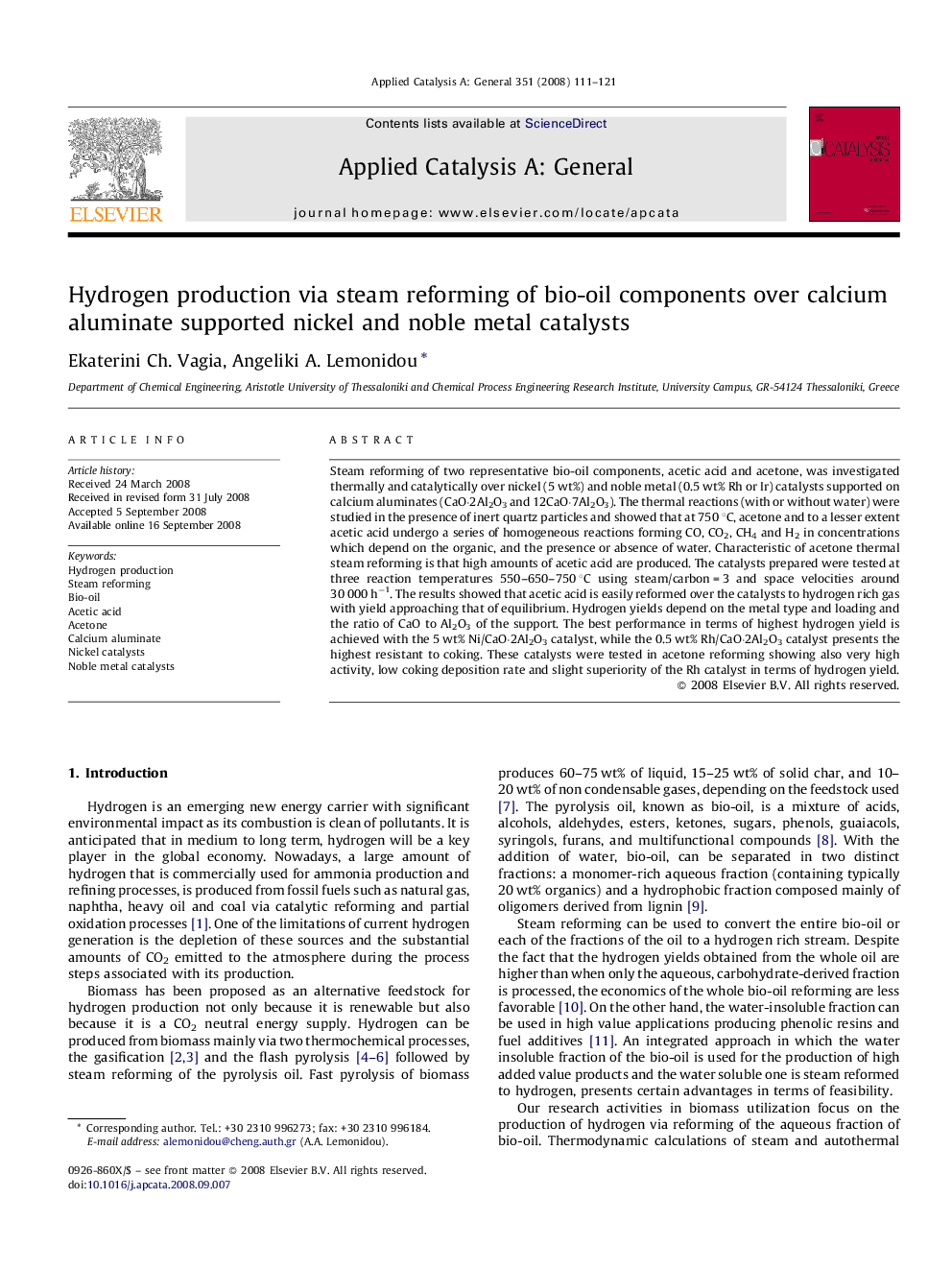| Article ID | Journal | Published Year | Pages | File Type |
|---|---|---|---|---|
| 42636 | Applied Catalysis A: General | 2008 | 11 Pages |
Steam reforming of two representative bio-oil components, acetic acid and acetone, was investigated thermally and catalytically over nickel (5 wt%) and noble metal (0.5 wt% Rh or Ir) catalysts supported on calcium aluminates (CaO·2Al2O3 and 12CaO·7Al2O3). The thermal reactions (with or without water) were studied in the presence of inert quartz particles and showed that at 750 °C, acetone and to a lesser extent acetic acid undergo a series of homogeneous reactions forming CO, CO2, CH4 and H2 in concentrations which depend on the organic, and the presence or absence of water. Characteristic of acetone thermal steam reforming is that high amounts of acetic acid are produced. The catalysts prepared were tested at three reaction temperatures 550–650–750 °C using steam/carbon = 3 and space velocities around 30 000 h−1. The results showed that acetic acid is easily reformed over the catalysts to hydrogen rich gas with yield approaching that of equilibrium. Hydrogen yields depend on the metal type and loading and the ratio of CaO to Al2O3 of the support. The best performance in terms of highest hydrogen yield is achieved with the 5 wt% Ni/CaO·2Al2O3 catalyst, while the 0.5 wt% Rh/CaO·2Al2O3 catalyst presents the highest resistant to coking. These catalysts were tested in acetone reforming showing also very high activity, low coking deposition rate and slight superiority of the Rh catalyst in terms of hydrogen yield.
Graphical abstractSteam reforming of acetic acid and acetone, was investigated thermally and catalytically over nickel and noble metal catalysts supported on calcium aluminates. The catalysts were tested at 550–650–750 °C, using steam/carbon = 3. The best performance in terms of highest hydrogen yield at acetic acid steam reforming is achieved with the 5 wt%Ni/CaO·2Al2O3 catalyst, while the 0.5 wt%Rh/CaO·2Al2O3 catalyst presents the highest resistant to coking. Figure optionsDownload full-size imageDownload as PowerPoint slide
